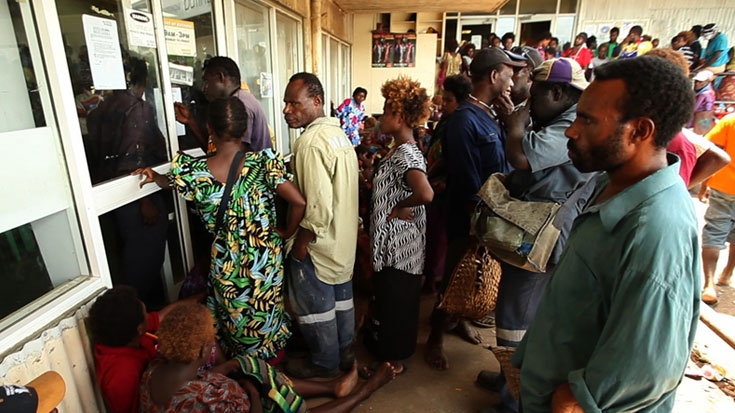Reports in both the national and international media and anecdotal evidence indicate that the prevalence of crime and violence is high in Papua New Guinea (PNG). It has become an important obstacle to long-term development. At the request of the Government of PNG, the World Bank conducted a study to better understand the social and economic costs of crime and violence to households, business, government and civil society, and to inform policy directions in managing these issues.
The resulting Research and Dialogue Series on The Socio-Economic Costs of Crime and Violence in Papua New Guinea is made up of five policy notes.
Key findings:
- Levels of crime and violence in PNG are high, and have remained consistently so over more than a decade. The homicide rate – considered the most reliable indicator of overall crime – was 10.4 per 100,000 habitants in 2010. The rate varies widely across regions, with an estimated rate of 66 per 100,000 in Lae and 33 in National Capital District, amongst the highest in the world. Robbery and assault are the most commonly reported crimes. Family and sexual violence is also highly prevalent, and affects both females and males.
- Violent crime, such as robberies and assaults, appears to be increasing as a proportion of overall crime, and that crime is on the rise in known “hotspots” such as Lae and the National Capital District (NCD). In Lae, crime appears to have increased for 11 of 12 categories of crime reported in 2010 (compared with 2005 and 2008 data). The use of firearms has also been increasing since 2008.
- Crime and violence are driven in part by recent social and economic changes, which have created disputes that are less amenable to management by traditional means. In particular, violence in PNG can be understood, at least partly, as a result of the inability of both traditional and formal institutions to manage the stresses that have come with rapid economic growth, increasing migration, and other factors.
- Crime constrains investment and growth, and the costs ripple throughout society. Eighty-one percent of businesses reported that their decisions for further investment or expansion of their operations were affected by the law and order situation in the country. Sixty-seven percent of firms identified crime as a constraint; this is more than four times the regional average for firms in East Asia and the Pacific (16 percent) and higher than all of the regional averages reported in the World Bank’s Business Enterprise Survey.
- Businesses incur high costs for security, much of which goes toward private security forces. Eighty-four percent of companies said they pay for security. This is over 30% higher than the average for the East Asia and Pacific region. Private security represents a significant and growing expense: more than two-thirds of businesses employ private security staff, and spend an average of 5 percent of their annual costs on this, compared to an average of 3.2 percent for firms in East Asia overall.
- Business owners and employees stressed that while the economic costs of crime and violence are important, it is the indirect, longer-term social impacts of crime and violence that effectively limit them from operating to their full potential. High levels of crime and violence create fear that constrains mobility of staff and clients, erodes trust, and reinforces stigma toward certain groups perceived to be dangerous, especially youth. Domestic violence, in particular, intrudes into the workplace.
Recommendations:
- Strengthen data collection, analysis, monitoring and evaluation to support evidence-based policy-making
- Address the structural drivers of conflict
- Direct interventions to address ‘stressors’ in crime and violence
- Assess and strengthen the effectiveness of formal law and order institutions
- Strengthen coordination and strategic partnerships at the national, provincial and local level

